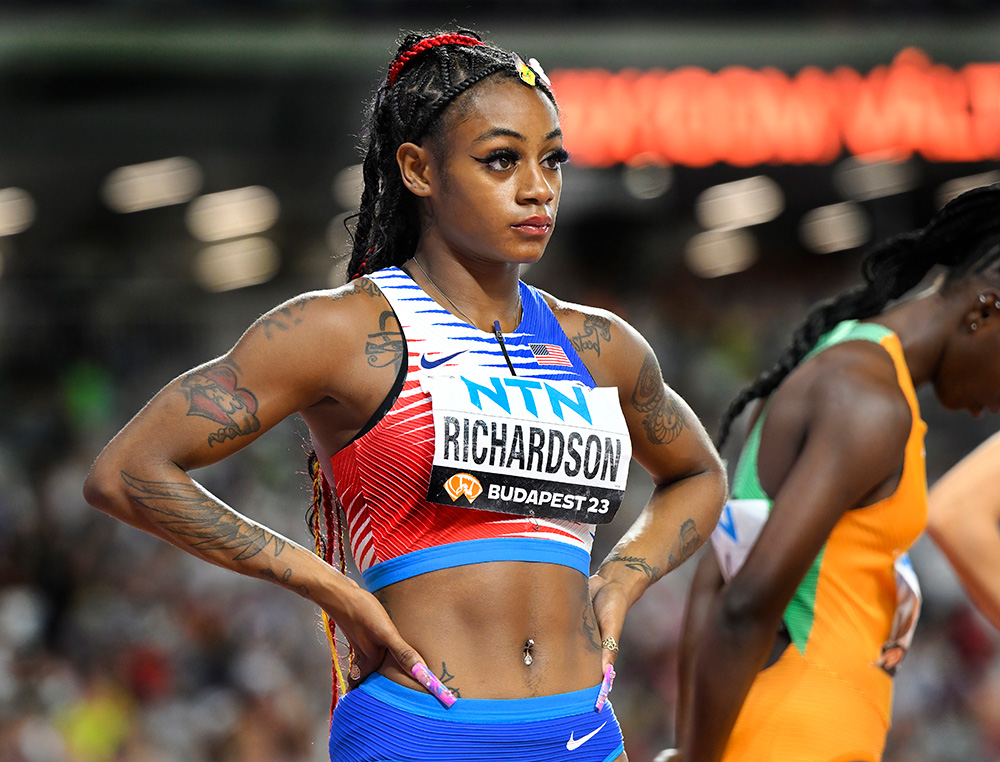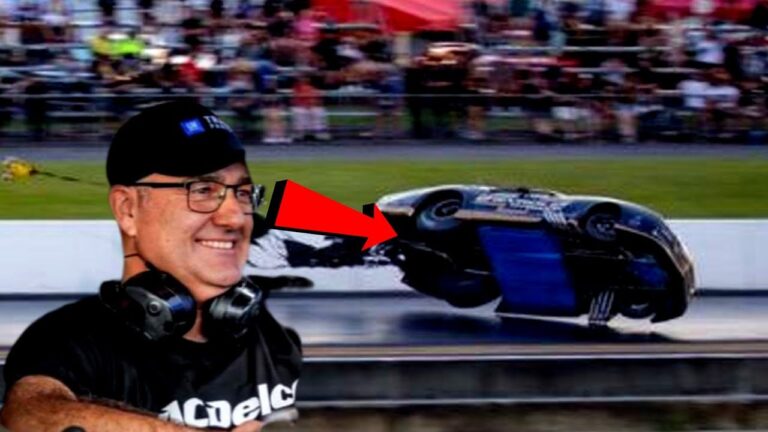NOT BACK BUT BETTER — it was a season of rebirth and resurgence for Sha’Carri Richardson, who stormed her way to the top of the WC podium in the 100 in a campaign that won her honors as our U.S. Women’s Athlete Of The Year.
Indeed, it’s not as if she returned from serious injury or time away from the sport. Rather, after a ’21 Olympic season that was marked by her dramatic victory at the Olympic Trials, a short-lived moment of triumph that was obviated 2 weeks later by a positive test finding for marijuana, Richardson surely felt like she had to establish herself all over again.
Her ’22 season, however, was one of frustration. Moments of extreme speed mingled with disappointment. She blistered dashes of 10.73w and 10.85 leading up to Nationals, then failed to make the finals in the 100 or the 200. She only broke 11 once more that year, a 10.93 in Brussels, but that was just good for 5th.
The ’23 campaign would be astonishingly different. Only once, in 16 efforts at 100, heats and finals, did she run slower than 11-flat. After a season-opener 4×1 leg at the Texas Relays, she put the world on notice in her first test in the 100, running a 10.75w heat and 10.57w final in Miramar, Florida, on April 08. A month later she got on the legal list with a 10.76 win at the Doha Diamond League. Suddenly, the 23-year-old Dallas native was back to being the woman to beat in the 100.
However, defeating Richardson proved difficult for her pursuers. At Nationals, she ripped through the first 2 rounds in 10.71 and 10.75. In the final, despite a weak start — often her Achilles heel — she tore the rest of the race with a fury, taking the lead with 40 to go and crossing the line looking more angry than jubilant. It would be her first berth on a global team.
She told NBC’s Lewis Johnson, “I’m ready, mentally physically and emotionally.”
Richardson made the team in the 200 as well. She came to Eugene with the season-best of 22.07 she set in Nairobi’s altitude. Quickly she put herself among the contenders with her windy 21.61 first round, a mark bettered in any conditions only by Florence Griffith-Joyner among Americans. In the final, she produced a PR 21.94 from lane 5, but was defeated by Gabby Thomas’s fast-finishing 21.60.
Between then and Budapest, she only raced twice. First came a 10.76 win at the Skolimowska Memorial in Poland. Then, at the Gyulai Memorial in Székesfehérvár, Hungary, she fell to Julien Alfred, the latter running her first professional race. The difference appeared to be Alfred’s lightning start, but observers wondered if Richardson would be ready to face the world a month later.
Observers kept on wondering after the first two rounds in Budapest. A 10.92 heat victory seemed on track. In Richardson’s semi, however, her 10.84 left her behind the 10.79s of both Jamaican star Shericka Jackson and Côte d’Ivoire’s Marie-Josée Ta Lou.
On the line for the final, Richardson appeared determined and focused. Stuck in lane 9, she was generally ignored by the live commentators during the course of the race. Their eyes focused on the center of the track, where Jackson overcame the beautiful start of 5-time champion Shelly-Ann Fraser-Pryce and began to pull away for what seemed like certain victory, only to have Richardson blow past in the final strides. This time, Richardson’s reaction was all joy; there’s a certain gratifying redemption that comes with winning a gold medal in 10.65, the fastest time of her life. It would put her at =No. 5 on the all-time world list.
Two days later, Richardson showed for the 200 heats, a 22.16 win advancing her to the semis. There, she finished behind Jackson, 22.00–22.20. That put her in lane 9 for the final, seemingly a perfect placement given the widest turn, not to mention the good vibes she might have had from riding the same lane to victory in the 100.



